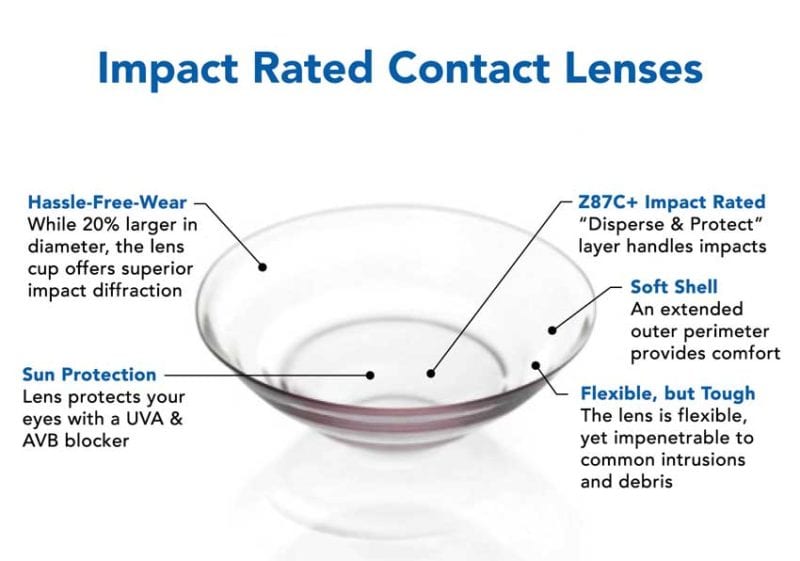In a surprise move, OSHA is expected to approve impact-rated contact lenses that meet the current Z87 impact requirements. New lenses that meet the standard will officially be listed under OSHA 20170401.Z87C. Lenses that exceed the impact standards will be able to carry a “Z87C+” designation. This is the same designation listed for typical safety glasses. We sat down with Dr. Calvin Thomas to get more details on the design and potential impact of these game-changing contact lenses.
NOTE: This was an April Fool’s post in 2017
Working with industry leaders from Bausch & Lomb, the new lenses work in a similar way to tempered glass shields on cell phones. Development of the lenses has pretty much been on par with the cell phone protection solution. Several scientists and engineers work simultaneously on both projects under an agreement to share technological breakthroughs.
“Creating a real impact solution for smartphone screens was an easy call from a business perspective. People spend hundreds on phones that realistically could be protected as well from the factory, but the manufacturers need people to keep buying them. Users don’t want to be forced into a purchase due to intentionally poor design quality. Impact rated contact lenses are a completely different scenario—we’re talking about people’s ability to continue working and maintain a high quality of life.”
Dr. Calvin Thomas, Chief Engineer, Temper Protection Products
Challenges with Impact Rated Contact Lenses
The longer time frame in bringing these lenses to users has everything to do with the complex nature of an eye’s shape. Further complicating matters is the fact that abnormalities such as astigmatisms change the eye’s shape even further from the norm.
Dr. Thomas added, “The principle between impact-rated contact lenses and tempered glass for device screens is essentially the same. We create a protective barrier that leaves only microscopic gaps between the eye and the lens. When an object impacts the lens, it prevents sharp edges from penetrating. The eye itself may still move from the pressure of the strike, but the lens prevents any object striking it from physically touching the eye. Challenges came in the form of creating a flexible, yet impenetrable lens and ensuring it covers the entire exposed surface of each unique eye rather than leaving the white—called the sclera—vulnerable like normal contacts.”
Work is already underway to bring the new impact rated contact lenses to consumers. FDA approval is complete with the paperwork being filed this week.
Dr. Thomas said, “This is a completely revolutionary idea. In addition to ensuring that our test results have been reviewed and repeated by colleagues in the lens development field, we have given world-renowned ophthalmologists the opportunity to see the research methodology, data, and test results. We really want the professionals who will prescribe these lenses to not only be on board with the technology but to be excited about it.”
Future of OSHA Impact Rated Contact Lenses
As a contact lens wearer, I admit that I’m skeptical. Dr. Thomas brought reports from their testing with him for me to view but asked that we not photograph or disseminate any specific details as trade secrets and pending patents abound. What I saw impressed me, but risks do present themselves. The wider lenses appear more difficult for traditional lens wearers to insert, and any impacts can cause discomfort lasting for anywhere from a couple of days to a week. But no test with this final design resulted in a puncture failure or permanent eye damage.
At the end of the day, the evidence is compelling, but I’m not sure I’m ready to risk my eyes on something this new yet.
The new impact rated contact lenses will be available in all current prescriptions for both nearsighted and farsighted wearers along with those that have astigmatism. I asked Dr. Thomas about any development towards a “Transitions” style contact lens that darkens as outside light levels intensify. He said that task falls under a different team and doesn’t directly relate to his project.
Preliminary studies show that impact rated contact lenses will retail at a 40% premium over standard lenses. This places a box of 6 in the $28 range. At this price, Dr. Thomas says their market research indicates tradesmen are willing to pay to be more comfortable on the job site.
Get the full details here.




